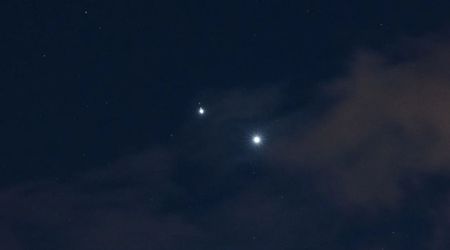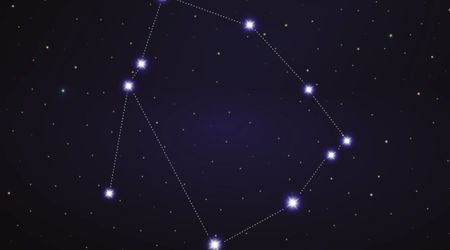Catch Mars’ stunning celestial events lighting up the evening sky throughout June

It's been a fascinating year for Mars observers. Since the beginning of 2025, those tracking the Red Planet would have noticed significant changes in its brightness and occasional close encounters with the Moon, prominent stars, and other celestial bodies. Mars's orbit means it experiences an opposition (when it appears directly opposite the Sun in the sky) approximately every two years and 50 days, a synodic period that is the longest among all known planets, according to Space.com.

After its last opposition on December 8, 2022, Mars reached opposition this year on January 16. Just two nights prior, on January 14, a nearly full moon eclipsed Mars for observers across much of North America. Mars, being the most Earth-like planet, made its closest approach to Earth in the morning of January 12, merely three and a half days before its opposition, with its next opposition anticipated on February 19, 2027. Despite these notable celestial interactions, the 2025 appearance of Mars was actually one of the less impressive in its 15- to 17-year cycle of varying opposition distances. Just three months post-opposition, Mars reached its farthest point from the Sun, resulting in our closest approach being 59.7 million miles (96.1 million kilometers), about 5.3 light minutes away. During this period, it shone with a yellow-orange hue at a peak brightness of magnitude -1.3, only slightly fainter than Sirius, the sky's brightest star.

However, since January 12, Mars has been moving away from Earth, progressively dimming. As of February 24, Mars has been in prograde (eastward) motion, appearing to move in a long, straight line, steadily growing more distant and smaller. Even so, it continued to offer captivating views throughout February and March, forming a prominent, albeit temporary, triangle with Pollux and Castor, the "twin stars" of Gemini. Later, on the evening of May 4, Mars had a close encounter with the Beehive Star Cluster (M44), creating a beautiful sight through binoculars or a lower-power telescope. Looking ahead to the latter half of June, Mars is expected to deliver more striking displays, first by partnering with a bright star and then, late in the month, with Earth's closest celestial neighbor.
Currently, Mars appears as a mere featureless dot when viewed through most telescopes. However, on Tuesday evening, June 17, it will create a remarkable naked-eye pairing with the slightly brighter star Regulus in the constellation Leo the Lion. For observers in the Americas, Mars and Regulus will be less than 2 degrees apart between June 13 and June 20, with their closest approach (less than 1 degree apart) occurring from June 15 to June 18. In areas to the west, where the Sun is still above the horizon during their conjunction, they will still appear relatively close as darkness falls, as mentioned by the outlet.
For locations where the conjunction happens within an hour of sunset, binoculars might initially be needed to spot Mars against the bright twilight sky. Once the sky sufficiently darkens, Mars will become much easier to observe. For most places, the Moon's upper limb will pass within approximately 20 arc minutes (one-third of a degree) of Mars. This gap will be slightly larger for observers in the northern US and Canada. and a bit smaller for those in the southern US and the Caribbean.









